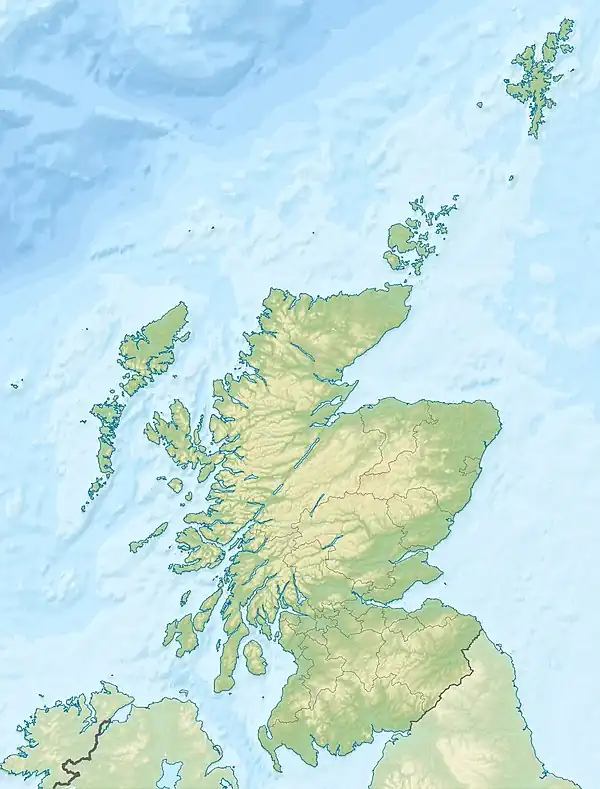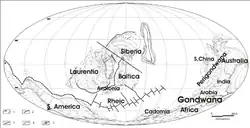| Fish Bed Formation | |
|---|---|
| Stratigraphic range: Wenlock ~ | |
| Type | Formation |
| Unit of | Glenbuck Group |
| Lithology | |
| Primary | Sandstone, conglomerate |
| Other | Shale, siltstone |
| Location | |
| Coordinates | 55°30′N 3°54′W / 55.5°N 3.9°W |
| Approximate paleocoordinates | 17°54′S 18°18′W / 17.9°S 18.3°W |
| Region | South Lanarkshire |
| Country | |
 Fish Bed Formation (Scotland) | |
The Fish Bed Formation is a geologic formation in Scotland, United Kingdom. The fluvial to lacustrine sandstones, shales, siltstones and conglomerates preserve flora, arthropods, among which eurypterids, invertebrates and early fish fossils dating back to the Wenlock epoch of the Silurian period.[1]
Description

The fish beds are contained within red-bed sequences comprising conglomerates, sandstones and siltstones that exhibit sedimentological features suggestive of deposition in terrestrial–fluviatile and lacustrine environments (Bluck 2002). The sporomorph assemblage from the Fish Bed Formation indicates that it is entirely non-marine and was most likely deposited in a relatively permanent lacustrine setting (Wellman and Richardson 1993).[2]
The formation, at the time part of Avalonia, was deposited during the Grampian orogeny.
Fossil content
The Fish Bed Formation has provided fossils of:[1]
Fish
Arthropods
Eurypterids
Invertebrates
- Gastropods
Flora
See also
References
- 1 2 Fish Bed Formation at Fossilworks.org
- ↑ Smithy Burn, Hagshaw Hills Inlier at Fossilworks.org
- 1 2 3 4 5 6 7 8 Plotnick, 1999
- ↑ Wilson, 2005
Bibliography
- Wilson, H. M. 2005. Zosterogrammida, a new order of millipedes from the middle Silurian of Scotland and the upper Carboniferous of Euramerica. Palaeontology 48. 1101–1110. .
- Plotnick, R. E. 1999. Habitat of Llandoverian-Lochkovian eurypterids, 106–136. in A. J. Boucot, J. D. Lawson (eds.), Paleocommunities - a case study from the Silurian and Lower Devonian.